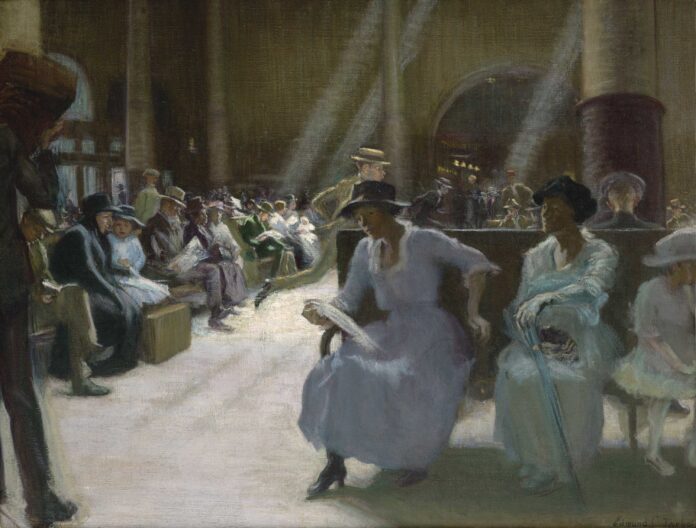
The title says it all. “All Aboard: The Railroad in American Art, 1840–1955” is the touring exhibition premiering this summer at Vermont’s Shelburne Museum, an institution that has long celebrated various modes of transportation. On view are more than 50 works by major artists who witnessed the railroad’s expansion and impact for themselves. The exhibition is on view June 21–October 13, 2024.
Starting with trains’ emergence as a technological marvel, the project traces the anxiety felt by such Hudson River School masters as Thomas Cole and George Inness about the railroad’s profound impact on nature. Yet colleagues such as Albert Bierstadt were enthralled by the Western landscapes that trains made it easier to reach, while early 20th-century talents such as Edward Hopper, Reginald Marsh, George Bellows, John Sloan, and Jacob Lawrence relished the constant movement of freight and people.
Ben Shahn, Thomas Hart Benton, and others portrayed railroad workers as modern-day heroes, while contemporaries like Georgia O’Keeffe, John Marin, and Joseph Stella stripped the machine forms down to highlight their power. It’s not all roses: the show also explores how railroads damaged Native cultures and contributed to wealth inequality nationwide.
“All Aboard” has been organized by Shelburne in partnership with the Dixon Gallery and Gardens (Memphis) and Joslyn Art Museum (Omaha), where it will appear later.







